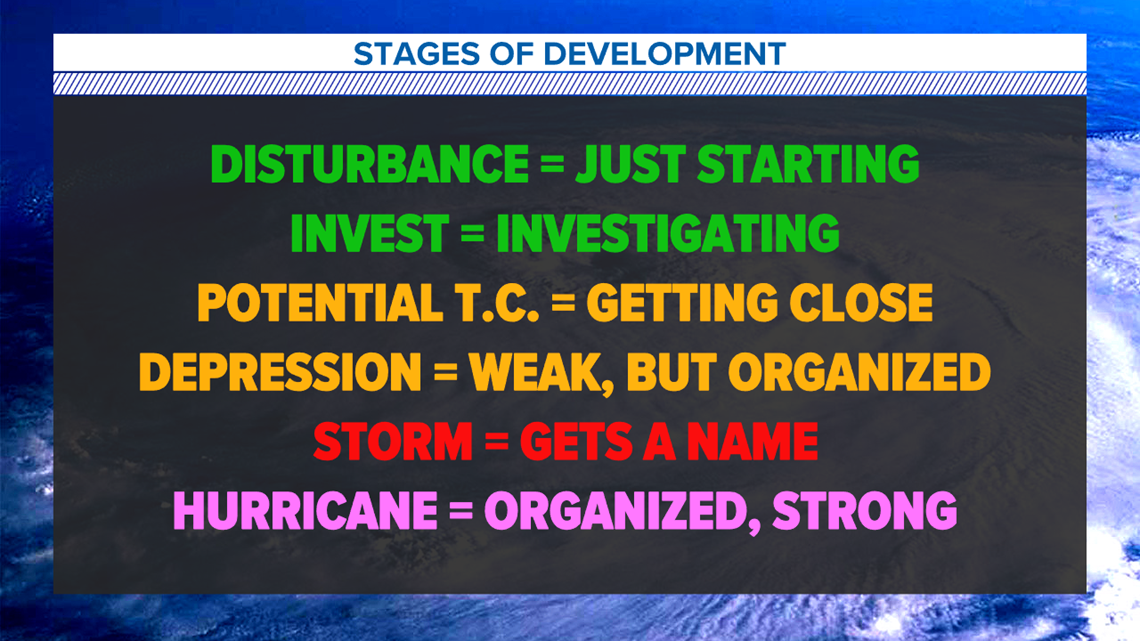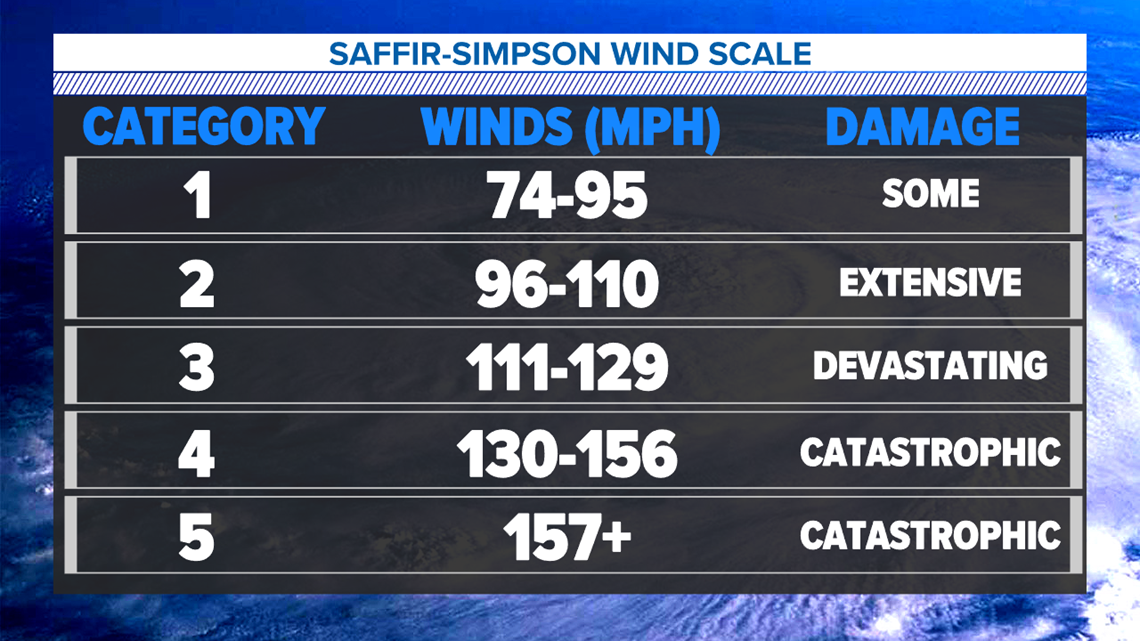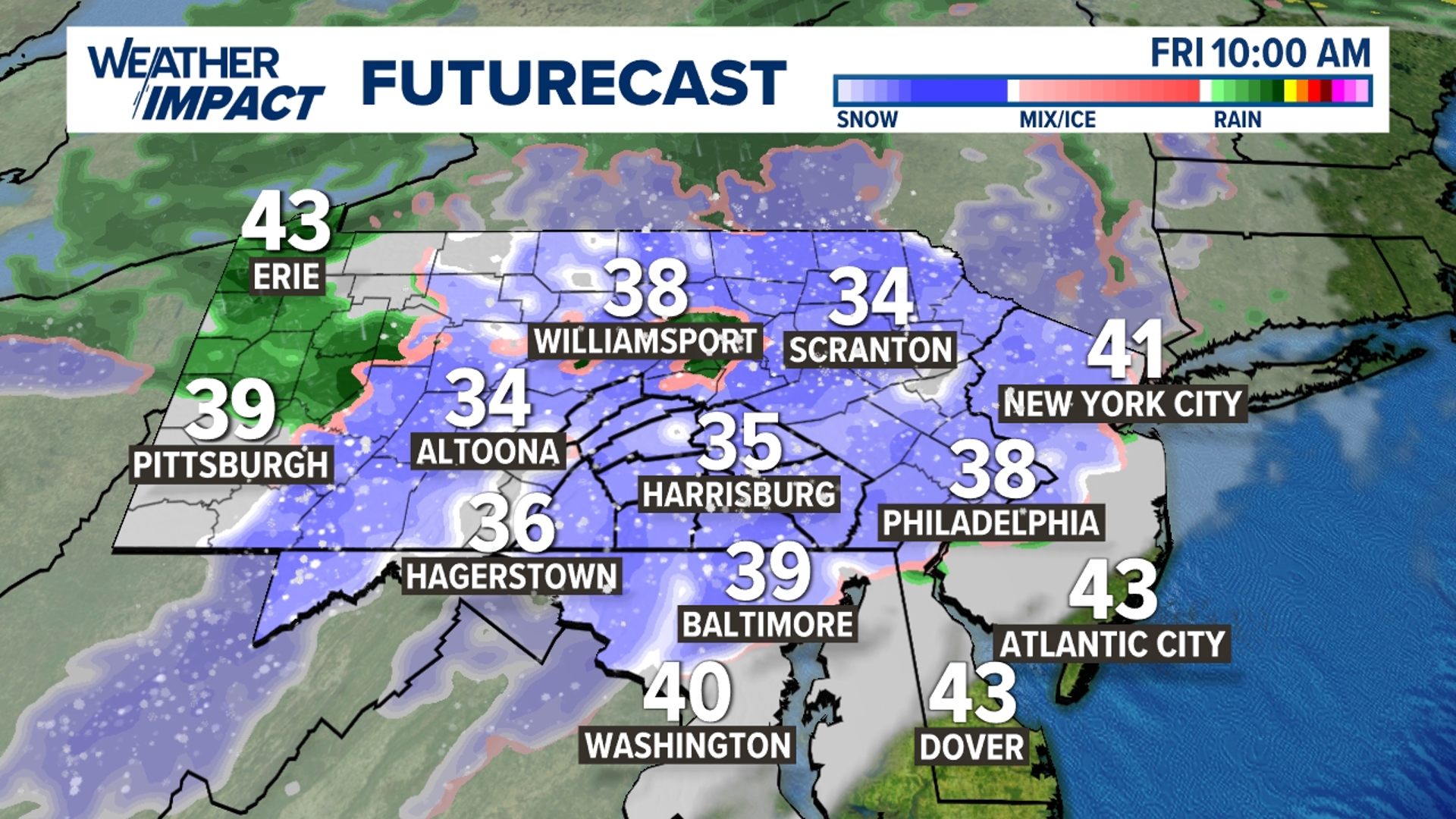You'll hear us mention all stages of the life of a tropical cyclone... storm... depression... see, it's confusing already!
Let's break down the lifecycle of a hurricane to understand what most of the words mean.
First, let's start with a tropical disturbance. This is simply a weather system of relatively-organized showers and thunderstorms that has been alive for 24 hours or more. It must originate in the tropics or subtropics (less than 35° north or south, latitude). These are usually 100-300 miles in diameter.
If conditions look right for this disturbance to survive, the National Hurricane Center may be interested in looking at it further, or "investigating." That's when a storm is called an invest, combined with a number from 90-99 along with the letter "L" to indicate it is located in the Atlantic Ocean.


If that invest is expected to become a tropical storm or hurricane threat to land in the next 48 hours, it is then called a potential tropical cyclone. Now, if a storm is days away from land, but has a well-defined eye and winds over tropical storm strength, it will still become a named tropical storm. This is only for instances where the invest has yet to become organized, but it expected to and will impact land in that timeframe.
Side note: a tropical cyclone's definition is a low pressure system that is not associated with a front (i.e. temperature differences between warm and cold air masses). A cyclone that develops as a result of that type of formation is an extratropical cyclone.
Back to the potential tropical cyclone. From there, we reach the more familiar terms of tropical depression, tropical storm and hurricane.
A tropical depression is a cyclone with sustained winds of 38MPH or less. It becomes a tropical storm when sustained wind speeds climb above 38MPH. At this point, it would be given a formal name.
A storm becomes a hurricane when winds reach 74MPH.


From there, the Saffir-Simpson wind scale assigns categories based on wind speed between 1-5. The scale of 3-5 is considered "major hurricane."
A weakening cyclone that no longer possesses tropical characteristics (organized center of low pressure, high sustained winds) is called a post-tropical cyclone.
And like the sands in the hourglass, those are the stages of the hurricane lifecycle. Keep those in mind as we continue through the season!
Until next time,
-Chief Meteorologist Bradon Long



